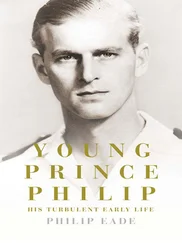Deep within Göring’s psychology, was a story of violence that began with hunting and continued through soldiering. As a child, he was taught to hunt by his Jewish godfather on palatial estates. Then he was removed from this opulent lifestyle at an impressionable age and sent to a military academy with its strict discipline. Göring became an army officer and was posted to a Bavarian regiment garrisoned in Mulhouse in the Alsace, an area annexed after the Franco-Prussian war 1870/1. Göring experienced occupation first hand. He served in the disputed frontier area and was present in the region during the political unrest that led to the Zabern Affair (1913). 3In 1914 he served in the trenches and later transferred to become a pilot. Göring was a fighter ace, served in and then commanded the famous Richthofen Circus and was awarded the Pour Le Mérite. Although Göring politicised his war record, it was not until he came to power that it became the central core of a radical political-military idea. In November 1918, Göring gave the farewell address as commanding officer of the Richthofen Circus, he recalled their combat victories and casualties. Fourteen years later, as President of the Reichstag, Göring recalled saying Germany would once again be allowed to fly, and ‘I would be the Scharnhorst of the German air force.’ Gerhard von Scharnhorst (1755–1813) was the driving force behind the reforms of the Prussian Army. An interesting role model since Scharnhorst was known to be, ‘silent and withdrawn, a man who looked more like a schoolteacher than an officer of the king.’ His ‘calm tenacity in adversity’ was in stark contrast with Göring’s temperament. 4When the Great War ended, Göring was at the peak of his physicality, a war hero with attitude, but unemployment forced him to search for direction—he met Hitler in 1922.
Göring’s Nazi biographer called him the ‘Führer’s paladin’ and pitched the narrative to his master’s achievements in rebuilding the nation. He had come a long way from his squalid street battles in Munich after the war. ‘From hero to zero’, in modern parlance informs a trajectory of violence that culminated in a bullet wound during Hitler’s Munich putsch (1923). The wound changed his physical being and the rest of his life. Göring saw himself as broken like Germany. His mission to create a Greater German Reich was as much a reflection of his condition as it was his endorsement of Hitler’s ambitions. Göring’s Nazism was different to that of Himmler, Rosenberg and Goebbels because it had been born in pre-war nationalism and fuelled by the events of 1918–1923. His belief in a Nazi military revolution was wholly different to both the SS and the army. His ideas were grounded in his self-constructed Germanic-romanticized-renaissance, bound by honour codes, Nazi etiquette, privilege and patronage. Richard Overy has argued that as the leading Nazi defendant at the Nuremburg war crimes, he bullied, chided and coaxed his fellow inmates. His inflated self-importance, egomania and ebullience left little room for contrition. In 1939 the allied politicians had believed Göring to be a moderate but at Nuremburg he proved to be as extreme as the rest of Hitler’s circle. Overy believed Göring was an old-fashioned nationalist with a radical personality. 5In 1933, as Prime Minister of Prussia, Göring enforced police regulations to smash Germany’s left-wing movement. From 1933, under his guidance, the forestry and hunting fraternities examined future legislation and regulations, which led to the National Hunting Law (1934) and the National Nature Law (1935). These ecological laws were subtle devices that conformed to the Nazi Volksgemeinschaft and the evolving police state. In March 1935, Hitler agreed to the formation of an independent Luftwaffe, within the Wehrmacht following rearmament, and Göring was made its supreme commander. The forestry service would incubate the birth of the Luftwaffe.
Göring’s Nazism was motivated towards restoring German national honour, but his institutional ambitions reached deeper into Third Reich society. Peter Uiberall was Göring’s official interpreter during the Nuremburg trial, and claimed the prosecutors were unable to reach deep inside Göring. Uiberall argued that confronting Göring with crimes committed in the name of Nazi Germany was pointless. He labelled Göring a ‘Condottieri type of personality’ who didn’t recognize right or wrong or know the difference between good and bad. As far as Göring was concerned the nation was an organism, a ‘body politic’ that had to be secured and protected by any means. 6Göring the Condottiero is an enduring image of corruption, Machiavellianism, and capriciousness. He was an enigma of countless variations. The political ambition, to make Germany great again—a political tract with remarkable durability—fused his ideas across the breadth of Nazi orthodoxy. Shaping a modern military institution out of forestry, hunting and aviation, which combined the elements that were most Germanic in spirit to raise a frontier police with the capability to strike at enemies from long distance. This was a breath-taking strategic concept even by Nazi standards. Frontier security reinforced with a hard punch was fundamentally defensive, but also colonialist and nation-building. The killing of Knuff, therefore, can be seen as symbolic of Göring’s representations of Germany—past, present and future.
The social engineering underpinning Göring’s organisational ambition was both racial and hierarchical. The green uniform of the state foresters and game wardens drew on the symbol of centuries-old traditions from German culture. There was a bizarre compromise between Hitler’s anti-blood sport rhetoric and Göring’s bloodthirsty passions. Their compromise settled on the institutionalisation of völkisch culture throughout the Germanic forest and Germanic game. On 3 July 1934, Göring introduced the Gesetz zur Überleitung des Forst- und Jagdwesens auf das Reich (the bill for the National Laws for the Centralisation of the forests and hunting). 7On 1 April 1935, the Reichsjagdgesetz (National Hunting Law) was enacted and the Jagdamt (hunting department) was established as a department within the RFA. 8Diagram 1 is an organisational chart of the Reichsforstamt, highlighting the Reichsjagdamt Abteilung IV. The diagram was drawn from the military plans for the forestry industry and the hunting fraternity for mobilisation into the Luftwaffe in the event of war. The national hunt law centralised management, regulated hunt discipline, incorporated the preference for Urwald or primaeval habitats and introduced a scheme for the advancement of the Germanic game. The politics of the hunt involved corralling the power and influence of the predominantly middle-class fraternity and propagating Nazi racism through the hunt’s classifying culture of social Darwinism.
[bad img format]
Diagram 1: Reichsforstamt organisation and the Jagdamt (1936).
Compiled from multiple sources filed under NARA, RG242, T77/100/145/301, (OKW WiRu Amt) Reichsforstmeister.
The German hunt was liberalised through laws made in 1848. The laws stimulated middle-class hunting, a social-cultural phenomenon in Germany. This process of culturalization was accelerated by industrial innovation in advanced gun design and manufacturing, mass-produced accoutrements and the mass distribution of cheap popular hunt literature. 9During the Great War, hunting became a symbol of the inherent warrior masculinity of German soldiers. The collapse of monarchy caused an ideological void within the hierarchy of the hunt regardless of the increasing influence of the middle-class. The middle-class hunt was bereft of ideology because of the preponderance of a modus operandi steeped in professionalism. There was a great outpouring of hunt literature after 1848, but there had been no single volume codifying a general hunt etiquette until 1914. 10Raesfeld’s hunting manual was written from a professional standpoint and became the standard reference because he avoided dogma and didn’t offend anyone. Fritz Röhrig, a senior forester on the staff of Greifswald University, later published a cultural history of German hunting with an undisguised national-conservative bias. 11Like most from his profession, the first edition condemned völkisch myths of the Germanen tribes, Germania and the growing desire for ritual from within the hunt. A later edition incorporated a nuanced Nazi narrative. He argued the period immediately after 1848 had led to the endangerment of game, especially the extensive killing of elk, deer and beaver. This was coded language for maligning the middle-class as ‘trophy vultures’. Röhrig however, was hostile towards both dominant social groups of the hunt. He criticised the ‘privileged classes’ (aristocracy) for their irresponsibility in opening the estates to “guest-hunters”. He railed against the middle-class for transforming the hunt into a shooting exercise. The local shooting clubs and rifle associations were also a target of his ire. Röhrig claimed the hunt declined after 1919 partly caused by the alienation of the Jagdjunker (hunting aristocrats) and the vilification of foresters as royalist lackeys. Thus, between Raesfeld and Röhrig, there had been an observable politicisation of the hunt.
Читать дальше












